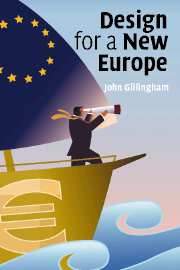3 - Innovation
Published online by Cambridge University Press: 18 August 2009
Summary
Do science and technology hold the keys to the future of the European Union (EU)? The notion reflects the conventional wisdom that research and development (R&D) drives growth in the knowledge economy through change brought about by the interaction of intellectual breakthrough and marketplace discovery. The result of this process, innovation, is an often-heard but much-abused word in Eurocratic Brussels, which, while advocating progress through R&D, stifles it. The gap between European promise and performance has widened since 2000 and is likely to grow in the future even with more active EU sponsorship of R&D. Europe will therefore not only fall further behind the United States but also lose ground to the emergent superpowers of China and India, which are expected to advance more rapidly than either the EU or the United States.
The broad contours of the scientific innovation process – which the futurist RAND Corporation terms the global technology revolution – are evident even now as it unfolds. The global technology revolution advances in three overlapping waves: the familiar one of information technology (IT), the controversial one of genomics, and the arcane one of nanotechnology. Each dates from a path-breaking invention: the microprocessor, genetic engineering (recombinant DNA) in 1971, and the atomic force microscope (AFM) in 1986. The three waves interact in complicated ways. The latter two presuppose the development of IT; they require computational modeling tools demanding “petaflops” (thousands of trillions of floating-point operations per second) of computing power as well as terabytes (trillions of bytes) of storage.
- Type
- Chapter
- Information
- Design for a New Europe , pp. 111 - 155Publisher: Cambridge University PressPrint publication year: 2006

